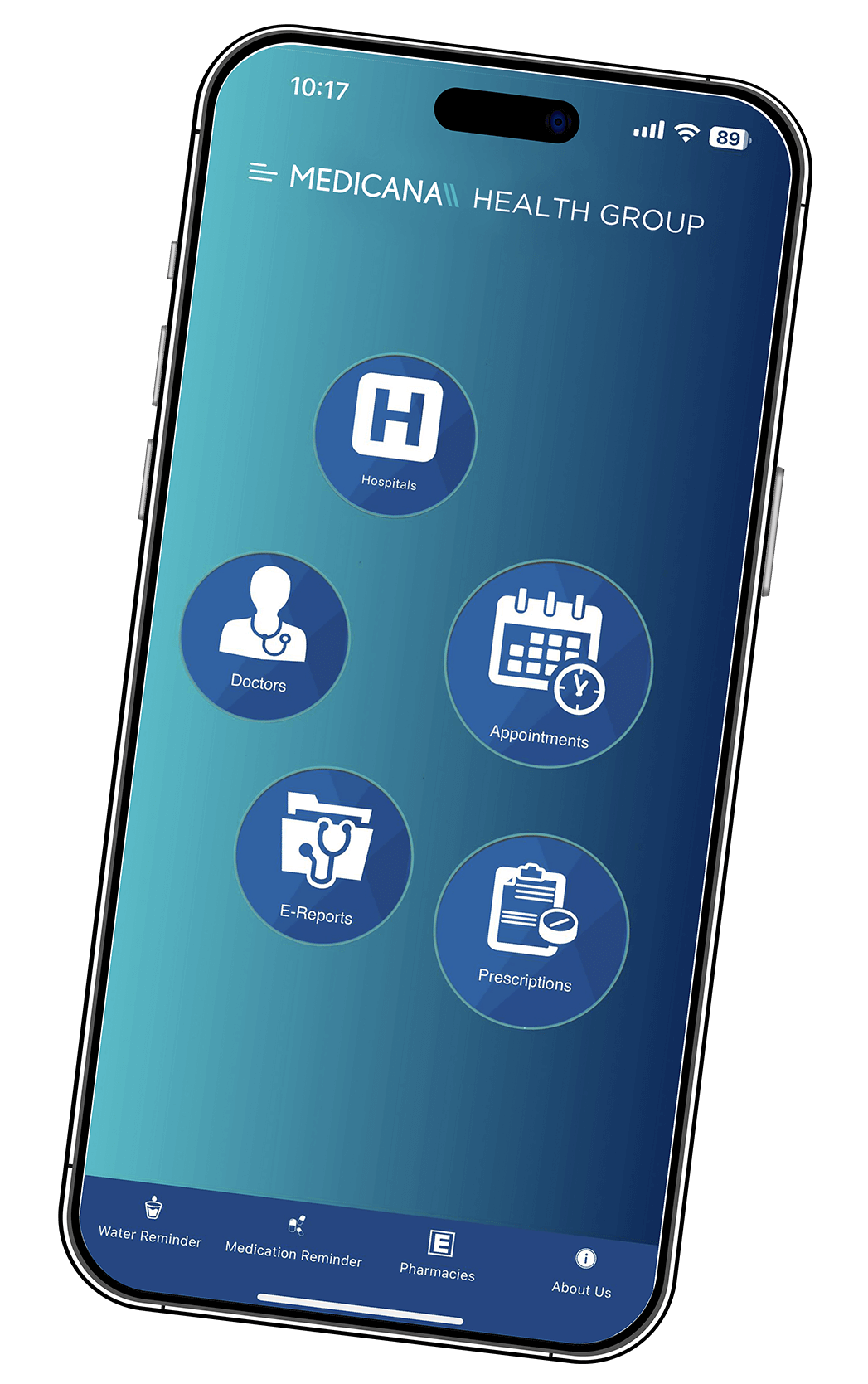Pediatric Cardiology

What is Pediatric Cardiology?
Pediatric cardiology is the branch of medicine that deals with heart problems in children, from the time they spend in their mother's womb up to the age of 18. During this period, heart disorders in children can be congenital or develop later. The field of pediatric cardiology not only focuses on treating heart conditions in children up to 18 but also addresses the treatment of adults with congenital heart diseases.
The areas of interest in Pediatric Cardiology include:
- Diagnosis, treatment, and follow-up of congenital heart diseases
- Diagnosis, treatment, and follow-up of acquired heart diseases
- Diagnosis, treatment, and follow-up of rhythm and conduction disorders (ECG, 24-hour Holter monitor recording, exercise testing, electrophysiological studies)
- Pre-sports assessment
- Fetal echocardiography
- Evaluation of symptoms such as chest pain, murmurs, palpitations, fainting
What diseases does Pediatric Cardiology address?
Some cardiac diseases in children may have no symptoms or present with mild symptoms, while others can have a more severe course. These symptoms may manifest as blueness in the baby, difficulty in feeding, fatigue while sucking, rapid breathing, shortness of breath, failure to gain weight, or frequent lower respiratory tract infections. Older children may come to our clinic with complaints such as easy fatigue, palpitations, chest pain, fainting, or high blood pressure, or they may be evaluated for their ability to engage in sports.
Many diseases seen in childhood affect the circulatory system and the heart. These diseases include congenital, rheumatic, infectious diseases and conditions affecting the liver, kidneys, and other systems.
In parallel with the recent advancements in medicine, many diseases previously treated with surgery can now be managed during catheter angiography without the need for surgery.
The heart diseases observed in children are grouped under three main categories.
Congenital Disorders
The most common heart conditions among children are congenital disorders, which are present from birth. Since the baby completes heart development in the first three months in the mother's womb, some conditions can be diagnosed after this period. With technological advances, diagnoses can be made and treatment administered shortly after the baby's birth.
The birth rate of children with congenital heart disease is 8 per thousand. At this rate, between 10,000 to 15,000 babies are born with congenital heart disease in Turkey every year. If either parent has a genetic heart condition, this rate can increase to 16 percent. In some cases, while treatment may not be possible in the womb, advanced imaging devices can detect the condition between the 16th and 20th weeks of pregnancy.
Heart disorders in infants can be diagnosed in the womb, and they may also manifest within the first year of the child's life. The symptoms of congenital heart disease include shortness of breath, difficulty breathing, underdeveloped muscles and limbs, growth retardation, chest pain, fainting, slow growth, heart murmur, tendency to pneumonia, and a feeling of lethargy. Parents who notice these symptoms in their child should seek the advice of a pediatric cardiologist as soon as possible. Early diagnosis in children enables quicker progress in treatment and helps prevent potential fatalities.
Some congenital heart diseases have causes that are not clearly understood. However, environmental factors, genetic predisposition, maternal use of illegal drugs and alcohol during pregnancy, viral infections, maternal exposure to radiation during pregnancy, consanguineous marriage, maternal nutritional disorders, and the mother's lifestyle can contribute to the child being born with a heart condition.
The most common congenital heart defect is a hole in the heart. Holes can occur between the atria or ventricles of the heart, and anomalies in the vessels leaving or entering the heart (malformations), developmental abnormalities in the ventricles or atria, anomalies in the coronary arteries, and abnormalities causing stenosis or insufficiency in the heart valves are also among congenital heart diseases.
Rheumatic Diseases
The rheumatic diseases most commonly observed in children aged 5 to 15 are also known as rheumatic heart disease. This condition, which arises from a throat infection caused by the bacteria known as Group A streptococcus, carries a significant risk of developing rheumatic heart disease if left untreated.
This condition, known as acute rheumatic fever, can manifest approximately 2-3 weeks after a throat infection. Acute rheumatic fever, which begins with symptoms such as swelling, redness, and fever in joints like the knees, ankles, and hands, has its most significant and noteworthy effect on the heart. It can lead to stenosis or insufficiency in the heart valves due to deformities caused by acute rheumatic fever. Skin problems can also rarely occur in this disease. In some children, changes in temperament, behavioral disorders, and involuntary movements in the hands, face, legs, and arms may also be observed.
Early diagnosis is crucial in rheumatic diseases as well. These conditions can be treated early with corticosteroids, penicillin, and antibiotics. However, there are instances where the disease can become chronic. Therefore, children with a throat infection should be under a doctor's supervision, and necessary tests should be conducted to determine whether the bacteria responsible for this disease is present.
Rhythm and Conduction Disorders
Rhythm disorder occurs when the heart beats too slowly, too quickly, or irregularly with pauses. Disorders of rhythm and conduction are among the congenital heart conditions in children, and they can also arise after heart surgery for various reasons. Illegal drug use, hyperthyroidism or hypothyroidism, anemia, low blood sugar, consumption of caffeinated foods and beverages, infections affecting the heart, or genetic arrhythmia disorders can also lead to rhythm and conduction disorders in children.
The most significant symptom of rhythm disorders in children is palpitations. Rhythm disorders can also lead to complaints such as difficulty breathing, chest pain, quick fatigue, sweating, and fainting after exertion. In infants, there are specific points that mothers need to pay attention to. If there are signs such as changes in the baby's skin color, rapid breathing, quick fatigue while sucking, and weakness, mothers should monitor their baby's heart rate during these episodes.
Pre-Sports Cardiological Evaluation
Through the monitoring of children engaged in sports activities, it is possible to assess the risk of sudden death in children. The disease called 'hypertrophic cardiomyopathy,' which involves thickening of the heart muscle, can lead to fainting and sudden death at a young age. Early diagnosis of many genetic diseases, such as 'Long QT syndrome,' which can lead to premature death, can be made through simple examinations.
The method of ultrasonographic imaging called fetal echocardiography allows the early detection of heart diseases in the baby in the mother's womb. In some cases, interventions can be made while still in utero.
Monitoring children engaged in sports activities allows for the identification of the risk of sudden death in children. The frequency of the disease called 'hypertrophic cardiomyopathy,' which is the most common cause of premature death at a young age, is reported to be around 1 in 1000. Another genetic disease leading to sudden death, known as 'Long QT syndrome,' has an estimated frequency in the community of approximately 1 in 2500. Early diagnosis of these diseases can be achieved through simple examinations.













